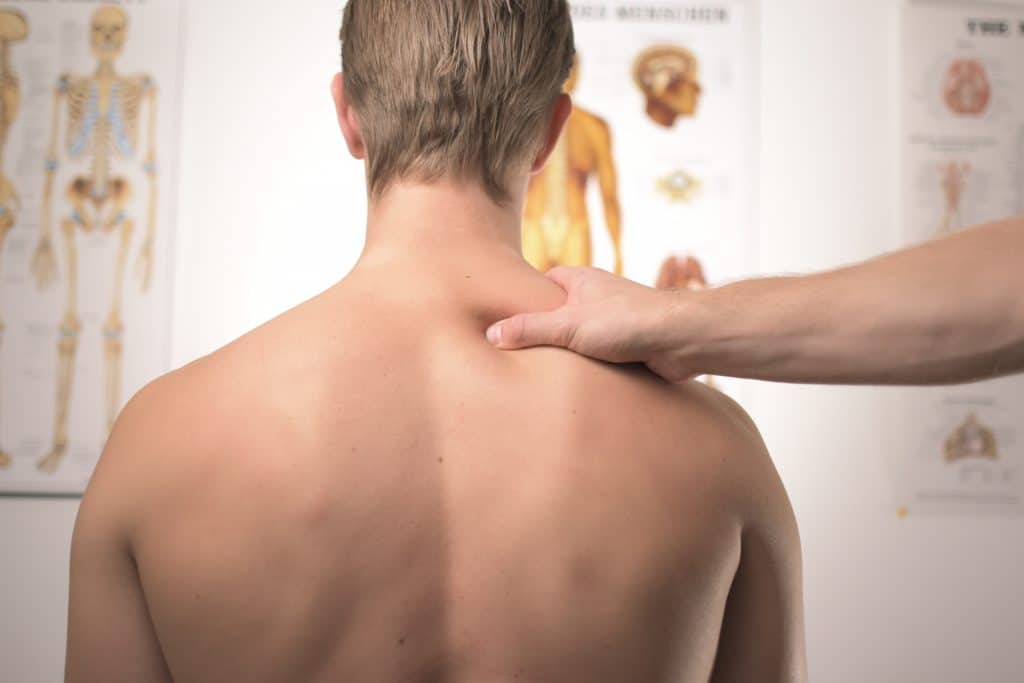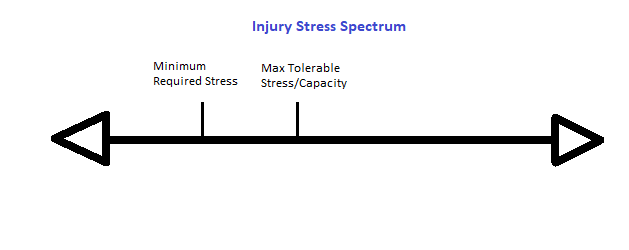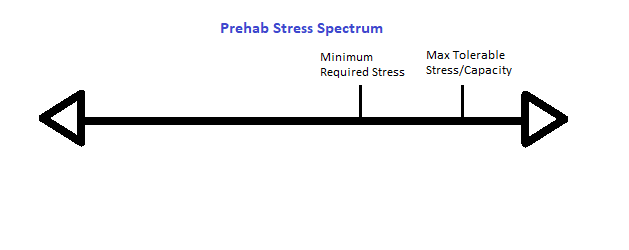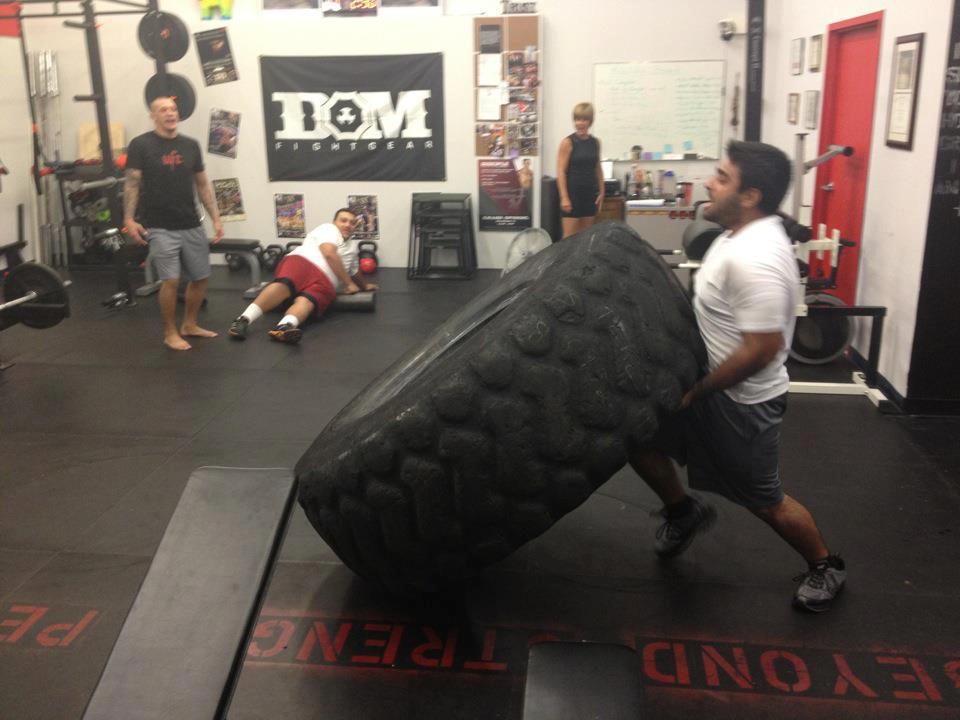We’ve all at one time or another heard the saying, “No pain, no gain!” It’s a common phrase that doesn’t really hold up. Sure, when training and training hard there will be discomfort at times. Discomfort that stems from pushing yourself beyond your present state. That doesn’t mean just pushing through movements when things truly hurt. The opposite is also true that we shouldn’t stop training altogether at the first sign of pain, because there’s always ways to train around pain.
If we stopped training at the smallest sign of pain, then we’d never reach our goals. In general, coming into the gym and doing something will be better than doing nothing. Sure, there are exceptions to this such as right after breaking a bone, while you’re hospitalized, etc., but other than that, getting to the gym and doing what you can is the best bet.
Pain is a signal worth paying attention to. When we’re experiencing pain during exercise the last thing we want to do is to ignore that signal, keep pushing things hard, and make it worse than it already is. Instead of pushing through pain with a no pain, no gain attitude, we check the technique of the exercise first. It could be as simple as adjusting the technique or position and the pain goes away. If that doesn’t seem to help, then we simply modify the workout for that day to keep training hard without making the situation worse.
Pain is complex, and it’s rarely caused by one thing. There are many factors that come into play and it’s not as black and white as we’d hope for it to be. We can have someone’s exercise modified in the hope that that new position will cause less pain, yet it still does. So, we try another option.

Modify
There’s an endless number of ways to modify any given exercise to be able to train around pain, and if needed, we can change the exercise completely. Our goal is to find the best position in which our members can be successful and keep training. That may be changing a walking lunge to a split squat, or to a sled push if needed. Or, something else entirely. Whatever allows them to train around pain and stay moving.
Arm in a sling? You can still train with the other arm or do lower body work. Sprained ankle? You still have the other leg and can train the upper body. There’s always something that can be done. Always. In fact, not only does moving less cause us to move away from our goals, but it also creates a problem for us.
A problem because when we sustain an injury of some kind our maximum tolerable stress (capacity) becomes lower. A lower capacity refers to not being able to tolerate the same amount of workload as before the injury.
 Diagram 1: Adapted From Dr. Jacob Harden’s Prehab 101 Course
Diagram 1: Adapted From Dr. Jacob Harden’s Prehab 101 Course
Looking from left to right in diagram 1 above, the first vertical line is the Minimum Required Stress, which refers to the minimum amount of stress or stimulus we need to benefit from an exercise. The space between that first line and second line could be referred to as the “adaptive window.” It’s in this space where we want our training to occur because we push ourselves enough to benefit from training, but we don’t push it too far. The second vertical line is our Maximum Tolerable Stress, or our capacity. This is the maximum amount of stress our bodies can handle.
 Diagram 2
Diagram 2
 Diagram 3
Diagram 3
Keep Training
Now, why is it so important to keep training after sustaining an injury? If you look at diagrams 1 and 2 you’ll notice the capacity is lower after the injury, and this makes sense. If some part of the body is injured, then it wouldn’t be able to tolerate the same amount of stress. This is important because now the same amount of stress we are used to from exercise would stress our systems more than normal.
This is part of the reason we get re-injured when returning to training because now our capacity is lower, so we can’t handle the normal workload we could before. Yet we often try to push ourselves as hard as we normally would as if we hadn’t been injured. Things start to feel better so we think to ourselves, “Oh, my pain is gone, guess I’m ready to train hard again.” Not necessarily though.
Just because our pain seems to have gone away doesn’t mean we’re 100 % good to go, especially if we stopped training during this time. We must ease back into training taking baby steps to slowly raise our capacity back up. And remember, our minimum required stress level is lower too, so even if we feel we’re “taking it too easy” with training, we’re not since we don’t have to push as hard to get a similar benefit from training.
This building back up of our capacity is the goal of “Prehab” as seen in diagram 3. We train with the intent to build our capacity back up to a point it is greater than it was before the injury. With this greater capacity we’ll be more resilient to injury and can handle a greater amount of stress.

Besides the benefit of not getting hurt with increased capacity overtime, staying moving while in pain allows us to keep making strides towards our goals. If something gets tweaked and we use that as an excuse to deter us from the gym, then we will be moving away from our goals. Maybe we won’t be moving towards our goals 2 steps at a time like before we got injured, but moving towards them 1 step at a time is better than standing still. Or even worse, moving backwards.
The quickest way to slow down progress towards your goals is to get injured. Worse still is not coming in and doing what you can. What’s slower than this still? Getting re-injured because you stopped training, which did nothing to build back up your capacity, and you went back to training too quickly.
Training around pain can be a real pain (sorry, I bet that dad joke was painful to read). But it doesn’t have to be a death sentence for our goals and time in the gym unless we let it. More movement is almost always going to be better than less movement. Even if you’re in pain or don’t feel like training, come in anyways. There’s always something that you can do to get moving towards your goals and keep your capacity as high as possible.
Sources:
Dr. Jacob Harden’s Prehab 101 course
